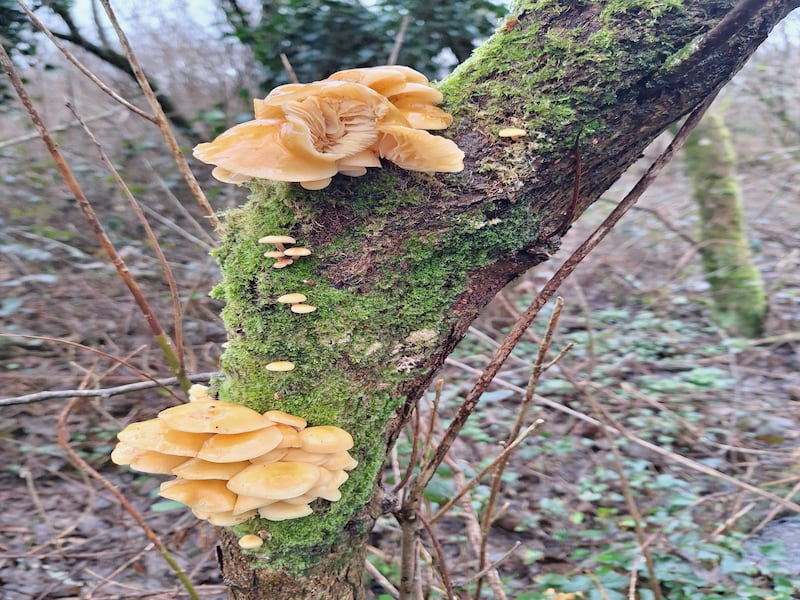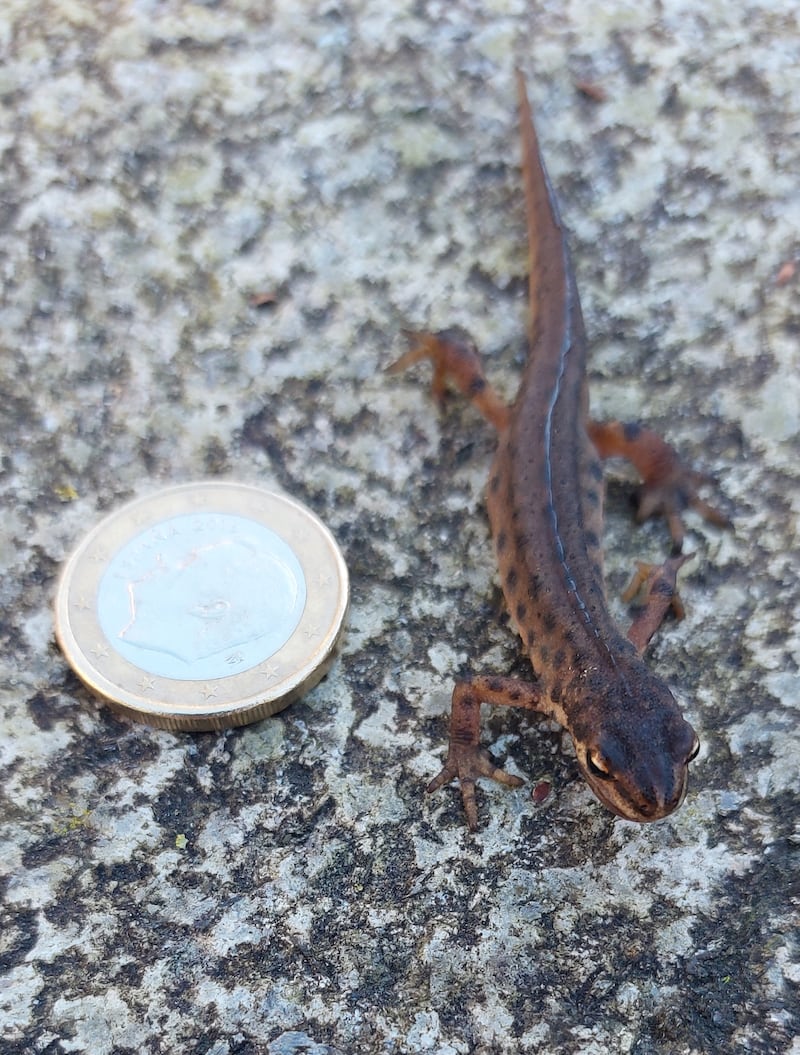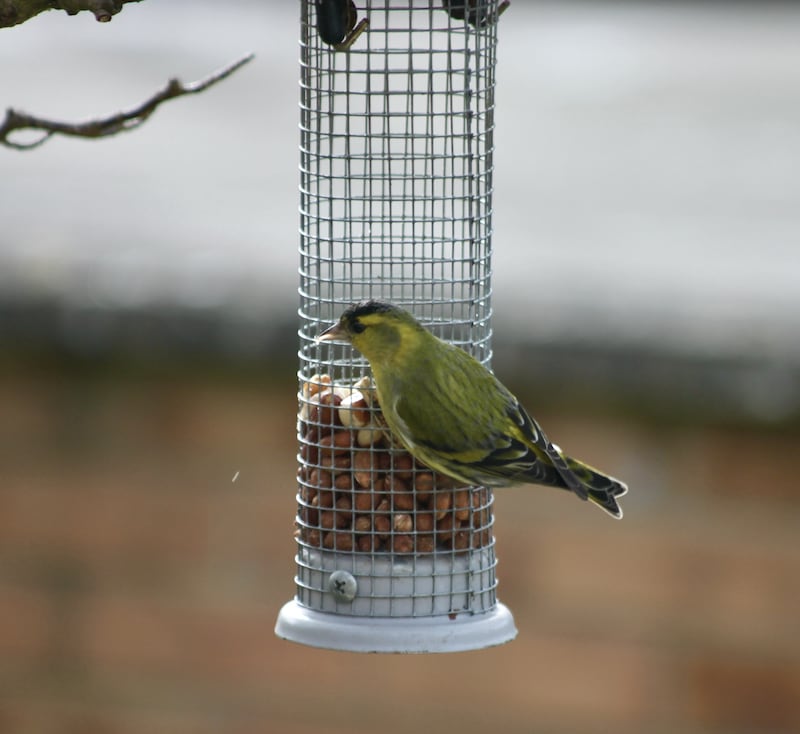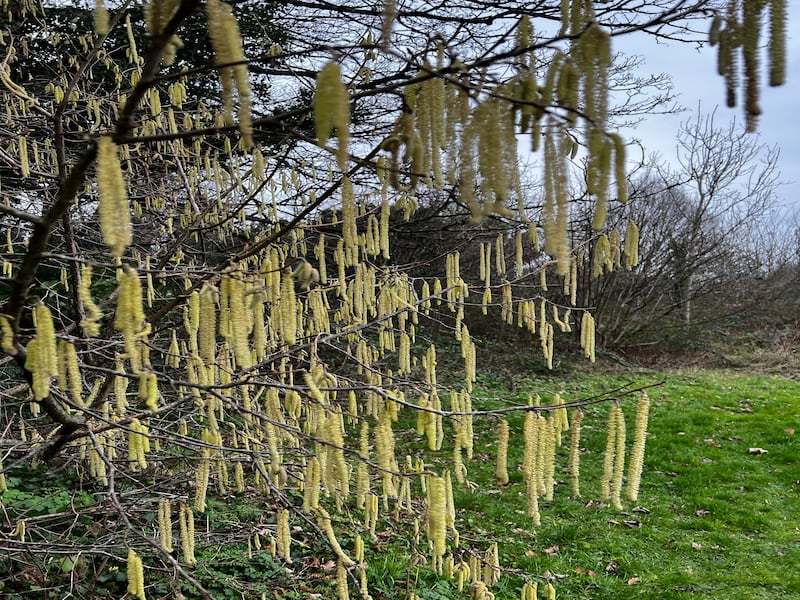I found this spider walking around my desk at home, it scared the bejaypers out of me. Is it dangerous? Peter Cusack, Co Dublin
Imagine how it must have felt, encountering you, more than a hundred times bigger. Still, it is not called Tegenaria gigantea for nothing. It has a body length of 16mm and the legs can be up to three times the body length. This is one of our house spider species, which normally lives under the floorboards or in undisturbed locations in the house. It is not dangerous unless you are a fly.

This is a picture of a chicken of the woods fungus growing on a living tree in Connamara. Paul Dunne, Co Galway
Oh no it isn’t. Chicken of the woods is a polypore fungus, which means its underside is spongy with tiny holes. Your picture distinctly shows gills underneath the caps. According to mycologist Hubert Fuller, this is a species of Flammulina, possibly velvet shank, though he would need to do a microscopy of the spores to be sure. Velvet shank is one of the only mushrooms in the world that can survive being frozen solid and produce new spores again afterwards.
READ MORE

I spotted this guy on the path to my house in early February; we put a euro coin beside him so you could see his size. He wasn’t like a lizard because he only moved a tiny bit and very slowly. We think it’s a newt, but we aren’t sure. Do you know what it is? We live about 200 metres from the Dodder in Bushy Park, and we were wondering if it might have come from there? Siúnanne Higgins (11)
You are right – it is indeed a newt. It should have still been hibernating, but the warmer weather must have caused it to wake up. Being an amphibian, it is cold-blooded, which means that it needs the sun to warm it up before it can get going. No wonder it was moving so slowly – not much heat from the sun in early February. It hibernates among tree roots and bundles of dead leaves, not underwater like frogs, so maybe it went back to sleep in your garden until spring comes properly.

This strange and pretty bird has appeared in our garden during the past few weeks. I’ve never seen one here before. What is it? Willie Long, Clondalkin
This is a male siskin, a small finch about the size of a blue tit. The black cap and yellow band behind the eye and two yellow bars on the black wings are the identification features. It breeds mainly in coniferous plantations, where it feeds on conifer seeds. It loves peanuts, however, and will come to gardens and perch upside on the feeders while eating. It has been recorded in about 40 per cent of gardens during Birdwatch Ireland’s Garden Bird Survey. The female has no black cap and is not as yellow.

What are these long yellow things hanging from the trees along the Royal Canal? They are not there all year round. Faith Lynch, Co Meath
These are the catkins, male flowers of the hazel tree. They come out early in the year before the leaves open and contain lots of pollen. This is blown by the wind to smaller red female catkins, which will go on to produce nuts in autumn. Once they have done this male duty, they are no longer required and so die away while the leaf buds open. They have also provided a vital early source of pollen for foraging bees in spring.
Please submit your nature query, observation, or photo with a location, via irishtimes.com/eyeonnature












